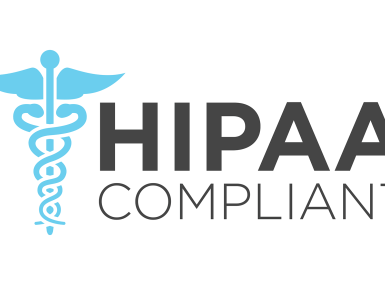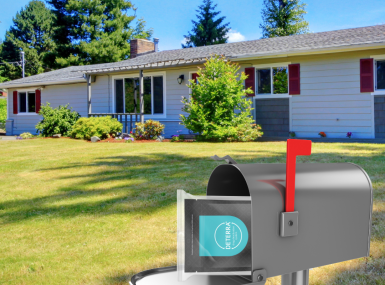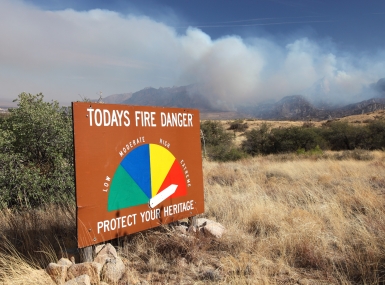Equitable climate resilience (ECR) for local governments: Using data to drive decision making
Upcoming Events
Related News

From our partnersThis blog post is sponsored by NACo partner IBTS. Discover vital strategies for embedding social equity in your climate resilience plans. Explore practical tools and recommendations at www.IBTS.org/ecr. |
The Institute for Building Technology and Safety (IBTS) recently completed a two-year study, funded by The Kresge Foundation, focused on helping local governments understand and address social equity in their climate resilience planning efforts. The first phase of the study, conducted in partnership with the National League of Cities (NLC) and National Forum for Black Public Administrators (NFBPA), included robust research of city challenges, successes, and unmet needs when addressing equity in climate resilience. The second phase used results from this research to develop and pilot an assessment tool to assist local governments with evaluating, measuring, and tracking their equitable climate resilience (ECR) efforts. This is the first in a series of blog posts that present study findings and top recommendations for cities interested in advancing equity in their climate resilience efforts. For more information, visit www.IBTS.org/ecr.
-----------------------------
Many local governments recognize the need for improving equitable outcomes in their climate resilience efforts. Numerous studies have demonstrated the connection between social vulnerability and negative impacts from extreme weather and natural disasters1 including much higher rates of mortality, injury, illness, job loss, and displacement, as well as weakened community connections and social well-being among underserved populations.
Yet addressing these inequities is a complicated and often a confounding challenge for local governments. In addition to competing priorities and limited budgets and resources, our study of 200 city respondents2 found that many are unsure where to begin. Barriers to undertaking equitable climate resilience (ECR) activities include funding, lack of understanding, and lack of buy-in from leadership.
Our study determined five components of ECR at the local government level that are crucial for advancing equity in climate resilience efforts:
- Data utilization
- Communication
- Stakeholder engagement
- Organizational capacity
- Funding and finance
Among these, data utilization often serves as a useful starting point. “We usually start an ECR conversation with a community by asking about their data – both what data they have and how they are using it” says Patrick Howell, IBTS project manager, who oversees the organization’s ECR work. “It’s important to find out how much they actually know about vulnerable populations, climate hazards and risks, and the intersection between the two.”
Ideally, a local government will have access to several data sources including census data, demographics, economic data, public health, housing availability, trends, pricing, and evictions, natural hazards, climate risk data, as well as what areas are in the floodplain or at risk for wildfires. “In addition to these external sources, don't discount internal data,” says Howell, who explains that jurisdictions can use information such as budget trends, cost benefit analyses of programs and policies, and results from equity audits to bolster ECR planning. Granularity is important as well. “Having a detailed understanding of how specific vulnerabilities and risks shift, sometimes significantly, from one neighborhood to the next will be a big help in your ability to prioritize and plan,” says Howell.
Realistically, many local jurisdictions do not have the resources to obtain this level of data, or they may lack agreement about what—if any—additional studies are needed. “You don’t need to have everything to get started or make progress in your ECR efforts,” says Howell, who recommends that local governments take advantage of data provided at no cost by national agencies and organizations. “These resources are available for anyone to use and can give you a much better understanding of your jurisdiction’s climate and social vulnerabilities, disasters, and demographics,” he adds. These include:
- Climate Mapping for Resilience and Adaptation offers a mapping tool with hazard risk and social vulnerability at the county level (https://resilience.climate.gov/);
- The Social Vulnerability Index, provided by The Center for Disease Control and Prevention’s Agency for Toxic Substances and Disease Registry (CDC/ATSDR) includes mapped data at the county level (https://www.atsdr.cdc.gov/placeandhealth/svi/interactive_map.html);
- Robert Wood Johnson County Health Rankings includes all counties in the United States. (https://www.countyhealthrankings.org)
- National Association of Counties (NACo)--County Explorer tool (https://ce.naco.org/). The tool compiles several data sources into one single platform including:
- Demographics
- Energy and Environment
- Justice and Public Safety
- Housing and Community Development
- Health and Human Services
- National Equity Atlas is a comprehensive website that provides detailed reports on racial and economic equity among cities and towns (https://nationalequityatlas.org/).
- The Climate and Economic Justice Screening Tool was developed as a result of the Federal Government’s Justice40 Initiative. It contains an interactive map with data and indicators of burdens across eight categories: climate change, energy, health, housing, pollution, transportation, water, and workforce development. (https://screeningtool.geoplatform.gov/en/#3/33.47/-97.5), transportation, water, and workforce development. (https://screeningtool.geoplatform.gov/en/#3/33.47/-97.5)
Additionally, local nonprofits, faith-based, and community organizations may have additional data and insights about the communities they serve that they can share. Establishing rapport with these organizations can also benefit numerous other ECR activities. “For example, you may want to conduct a community meeting with residents to better understand their awareness about what to do in a disaster or potential barriers to evacuation,” says Karen Johnson, IBTS’ Market Engagement Program Director, who led the research team for the study. “Local organizations can help connect you with the residents you want to reach and encourage them to participate. You’ll save yourself a lot of time and energy and get better input.” There is also the Community Economic Development Studies (CEDS), which is required by local governments; this study contains a wealth of information.
Once you have the data, it is just as important to identify how you will analyze, understand, use, and share it. “It’s not uncommon for an organization to have raw data that no one is really using, or is really even sure how to use,” says Johnson. “Or you may have silos, where one department is using data but has not shared it with other departments that could also benefit from it. It is easy to miss opportunities to leverage the data you already have, especially in local governments that are understaffed or under-resourced” A solution would be to have a principal place where all data is stored or uploaded, like a file server or SharePoint.
In many cases, the most difficult part for a jurisdiction is getting buy-in from stakeholders and residents. It is necessary to be transparent about why you are collecting the data, what the goals are, and how it can impact residents. Residents need to learn about climate risks and how to plan for disasters. Providing maps and data visualizations to them can help mitigate potential issues should a disaster happen. Consider a portal for residents to utilize to find information quickly about their residential areas, what impacts them, and some resources available for immediate needs.
Another important consideration is budgeting. Use data to drive decision making and make sure that ECR is a part of the budgeting process. The economic cost from disasters should be weighed against the cost of inaction. The cost of inaction is data that tells you what the outcome will be if you chose to not act prior to a disaster. If a disaster were to happen in one of the most vulnerable neighborhoods right now, the lives lost, buildings damaged, and livelihoods affected would be just some of the potential costs. An ECR assessment can help identify specific areas of vulnerability, and then maps those areas to opportunities for funding and assists with incorporating ECR into the jurisdiction’s budgeting processes.
Data utilization is a common thread to other ECR categories we have identified. For example, in your stakeholder engagement efforts, data can be used not only to identify ECR vulnerabilities, but it can be used to tell the story of the impacts of certain hazards or burdens on the community. It can also be a powerful tool when making difficult budget decisions about which program areas and/or neighborhoods may need to be prioritized. IBTS will have future blog posts to take a closer look at these remaining ECR categories.
It is necessary to have a baseline understanding of the drivers and the conditions of vulnerability in our communities in order to effectively mitigate risks and build resilience. This begins with assessing the data, which is already available to you, what data you may still need, and how that data is being utilized and shared across community stakeholders.
Post Sponsor

Related News

Counties and Railroads: Shared Priorities for the Next Surface Transportation Bill
County leaders from across the country have a vital opportunity to ensure their infrastructure priorities are front and center.























